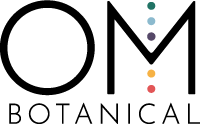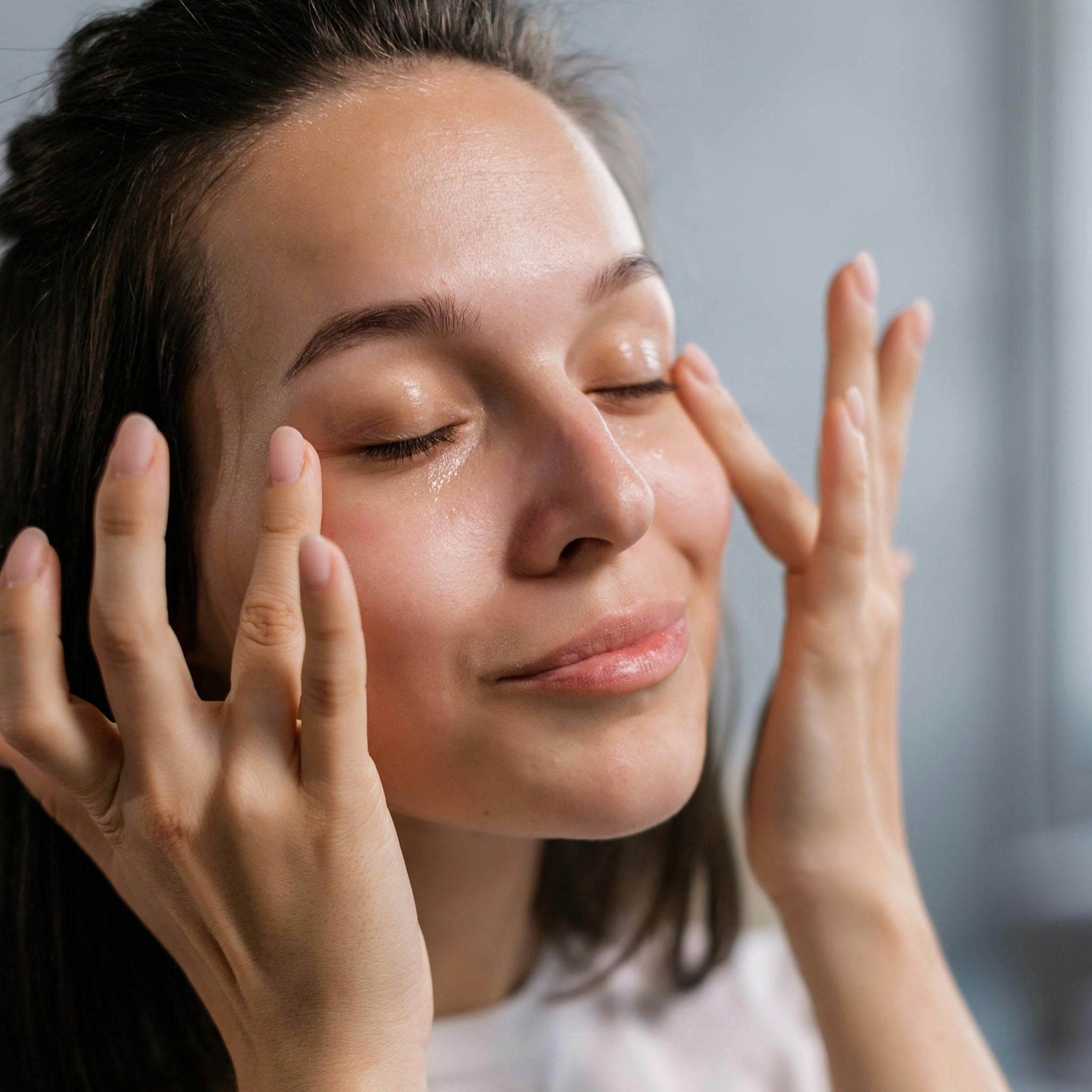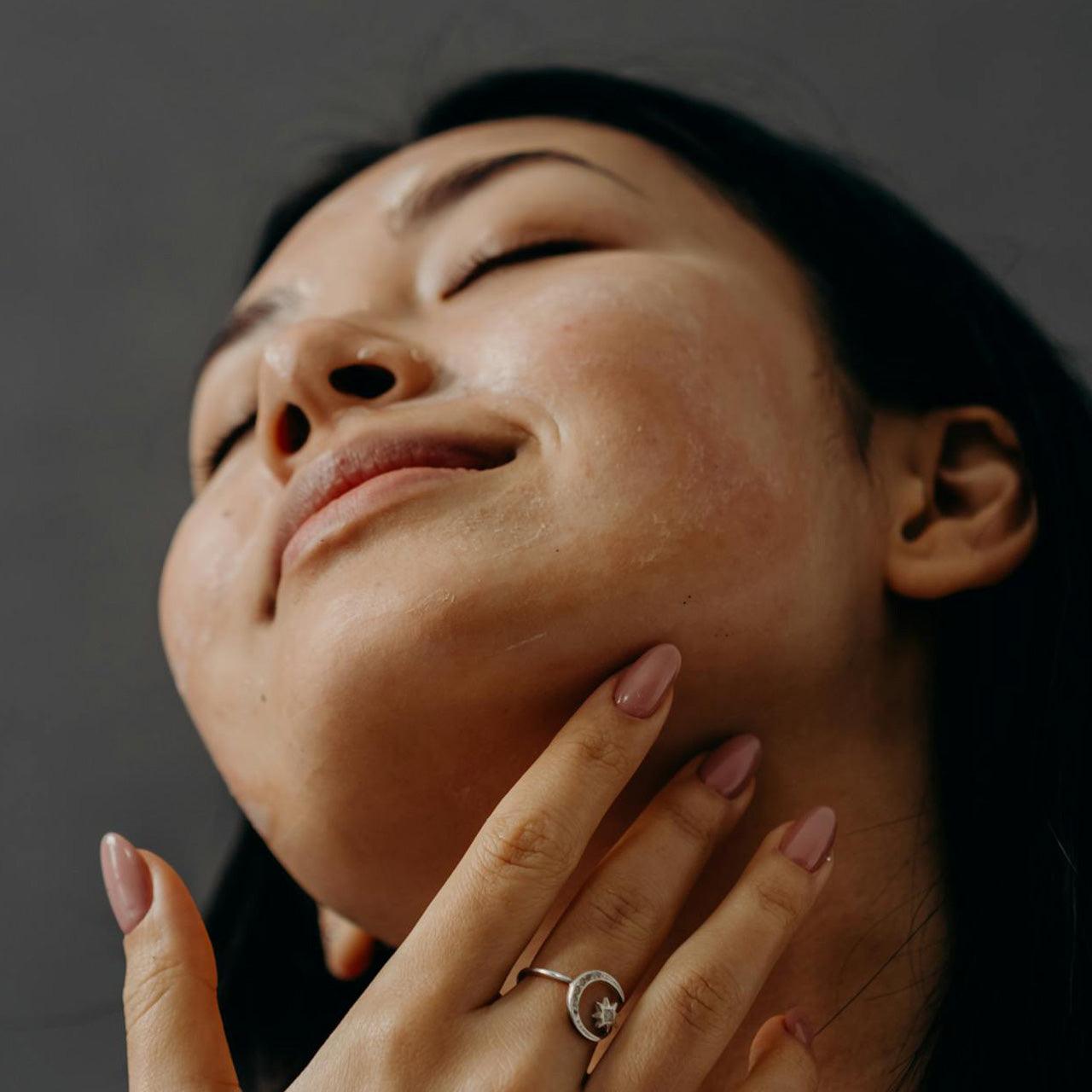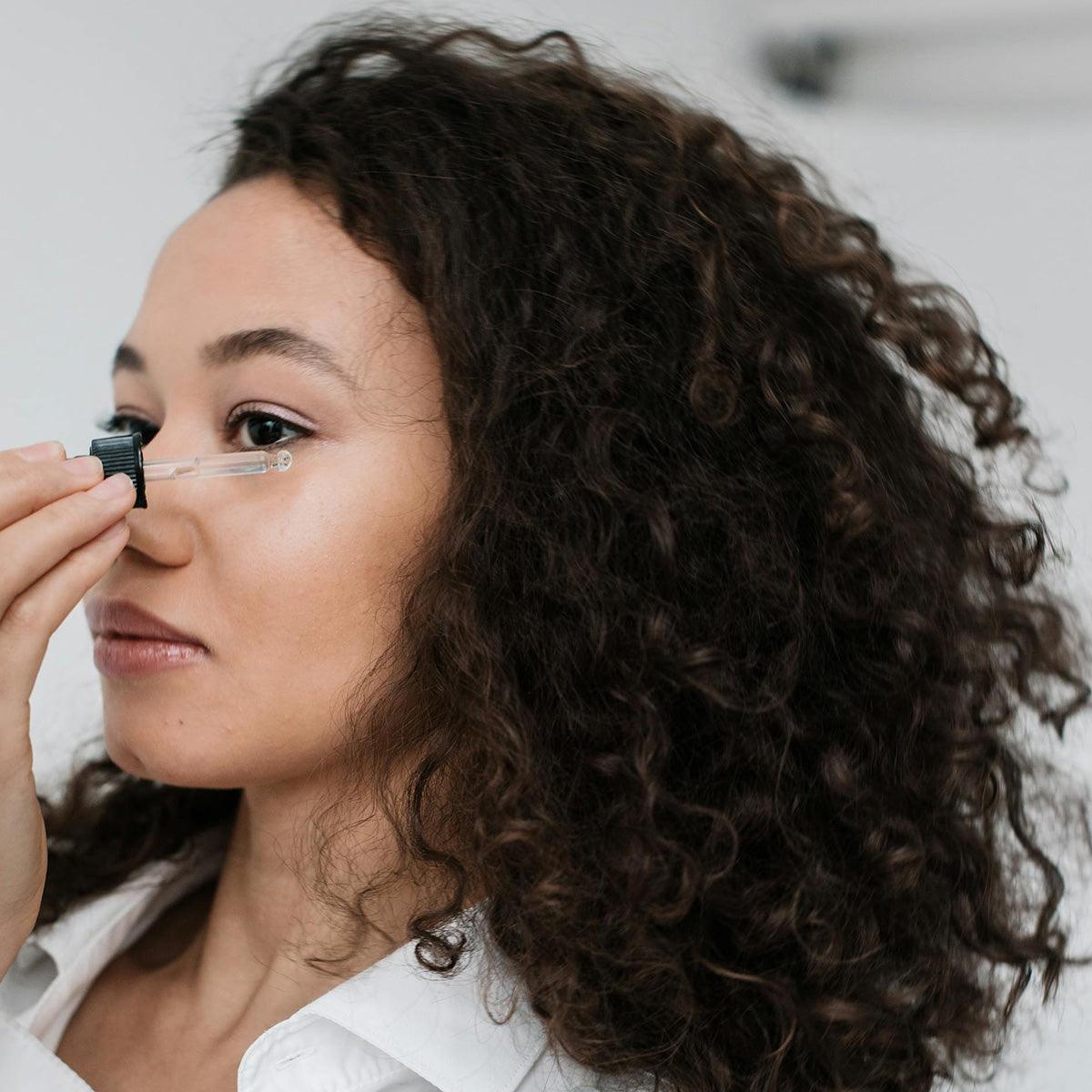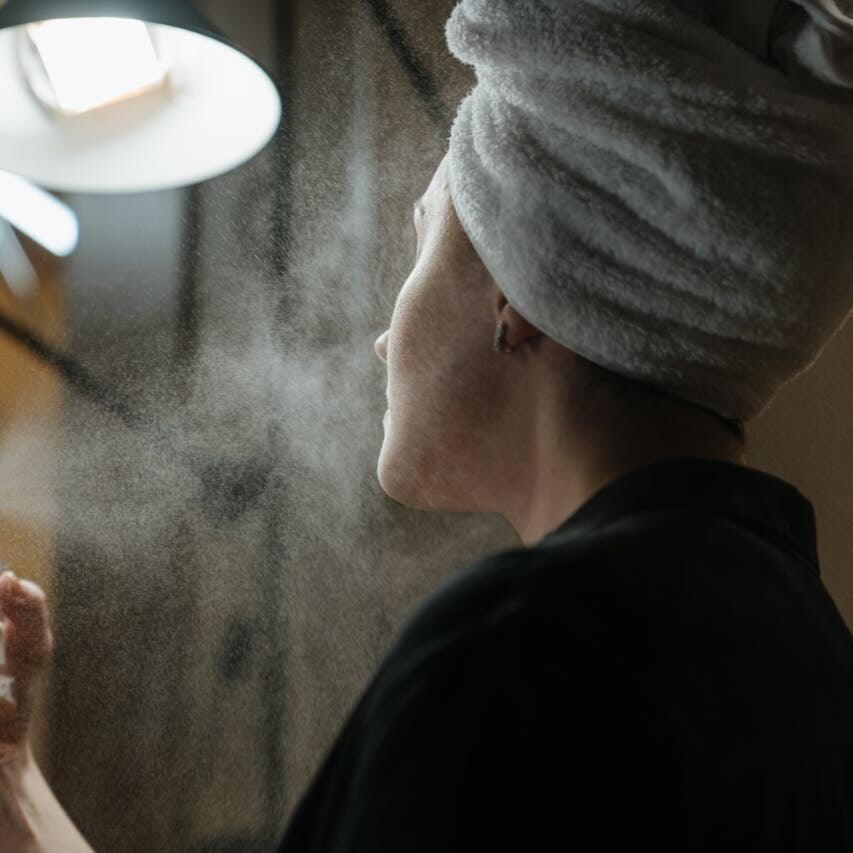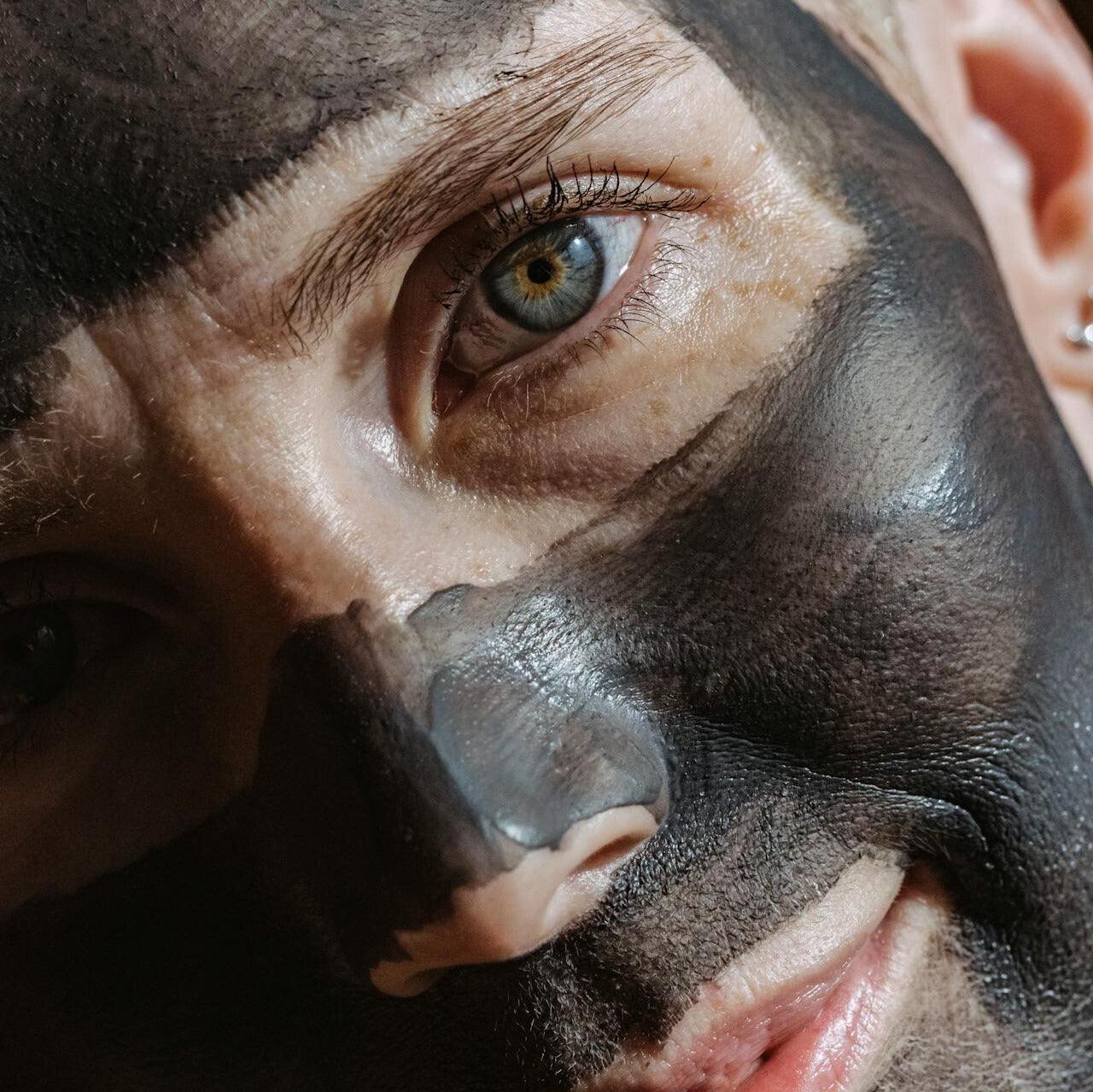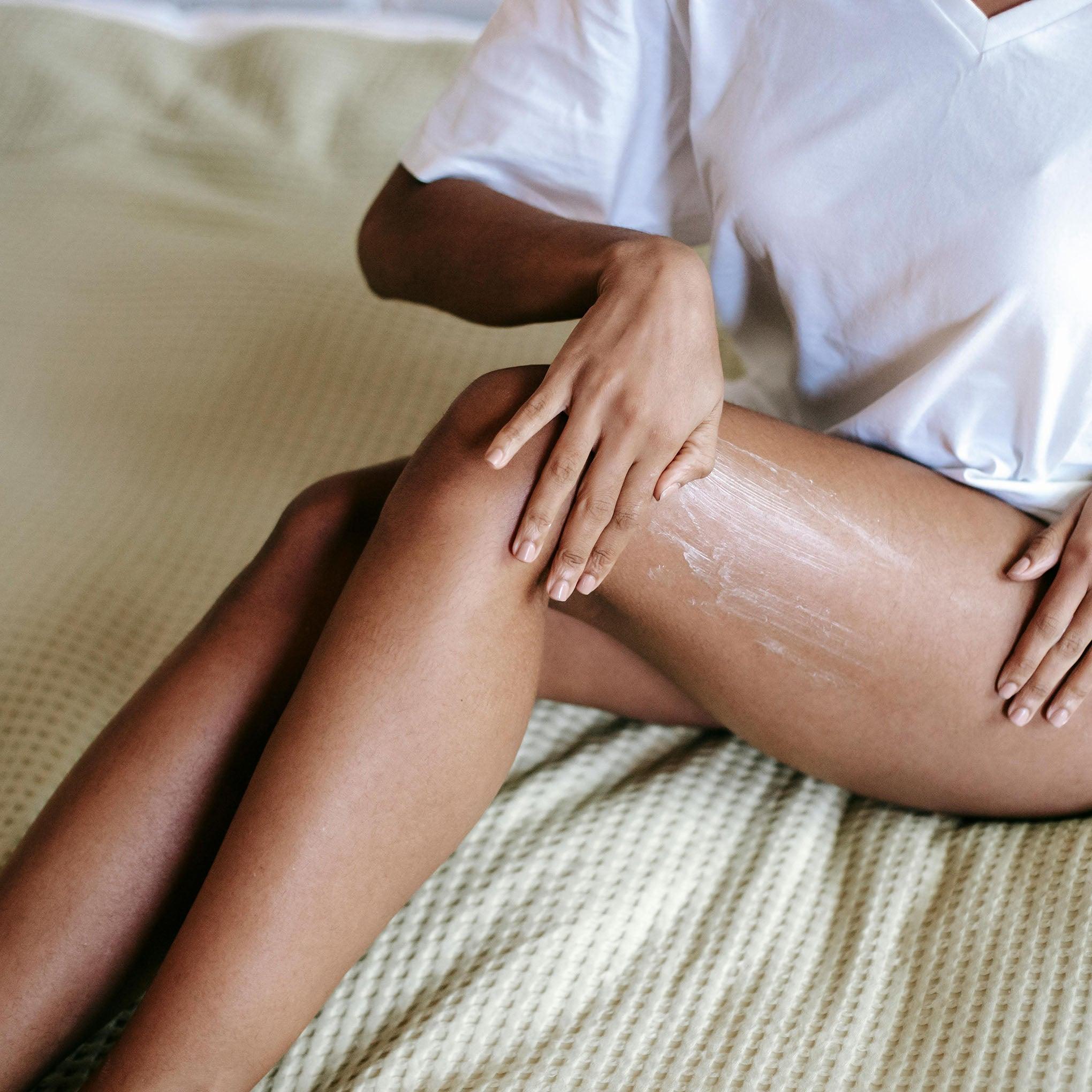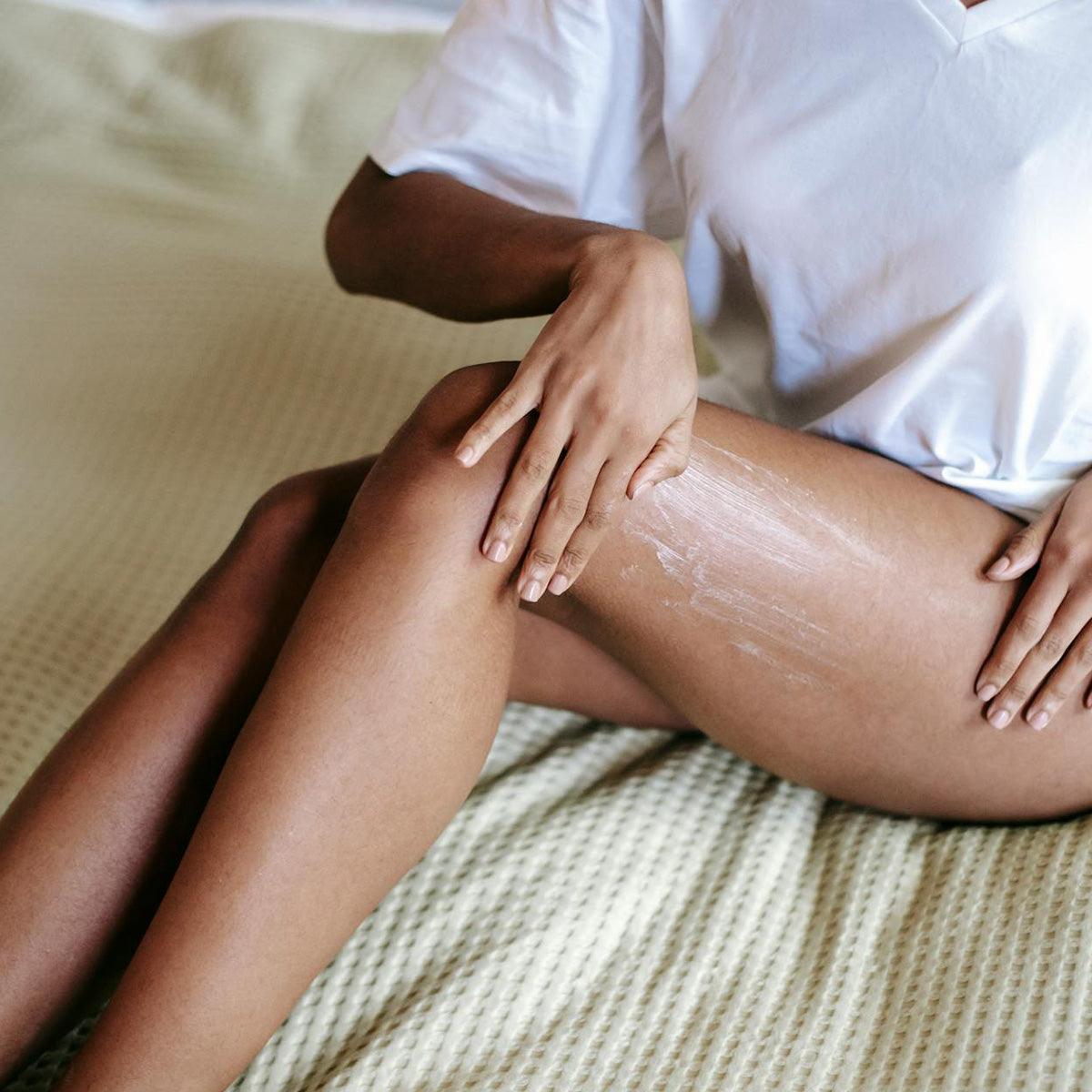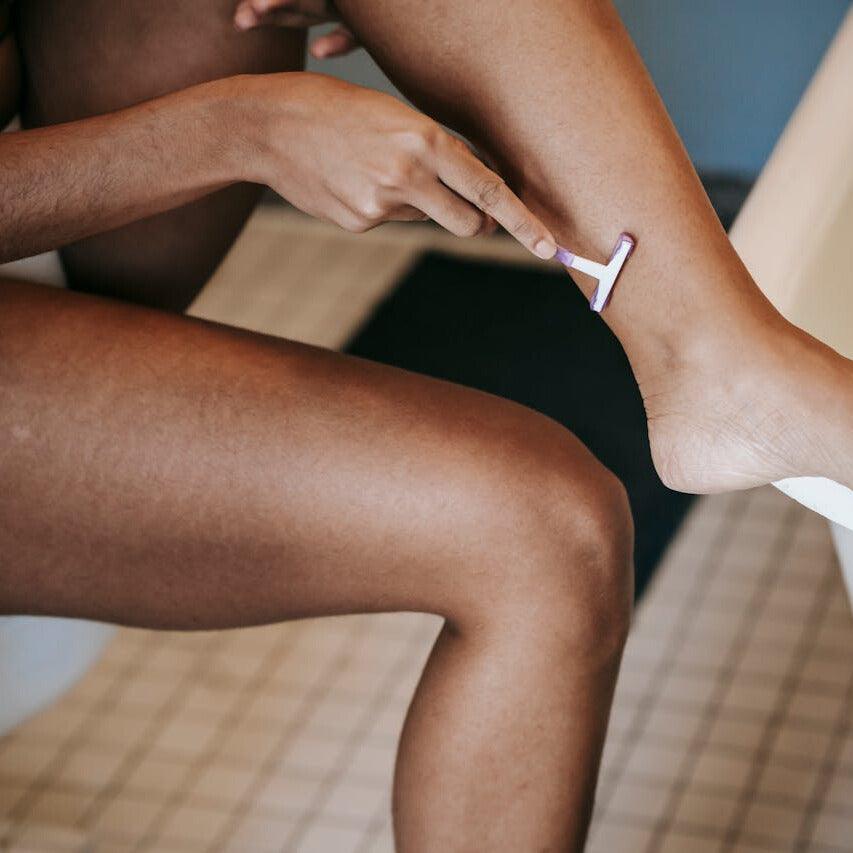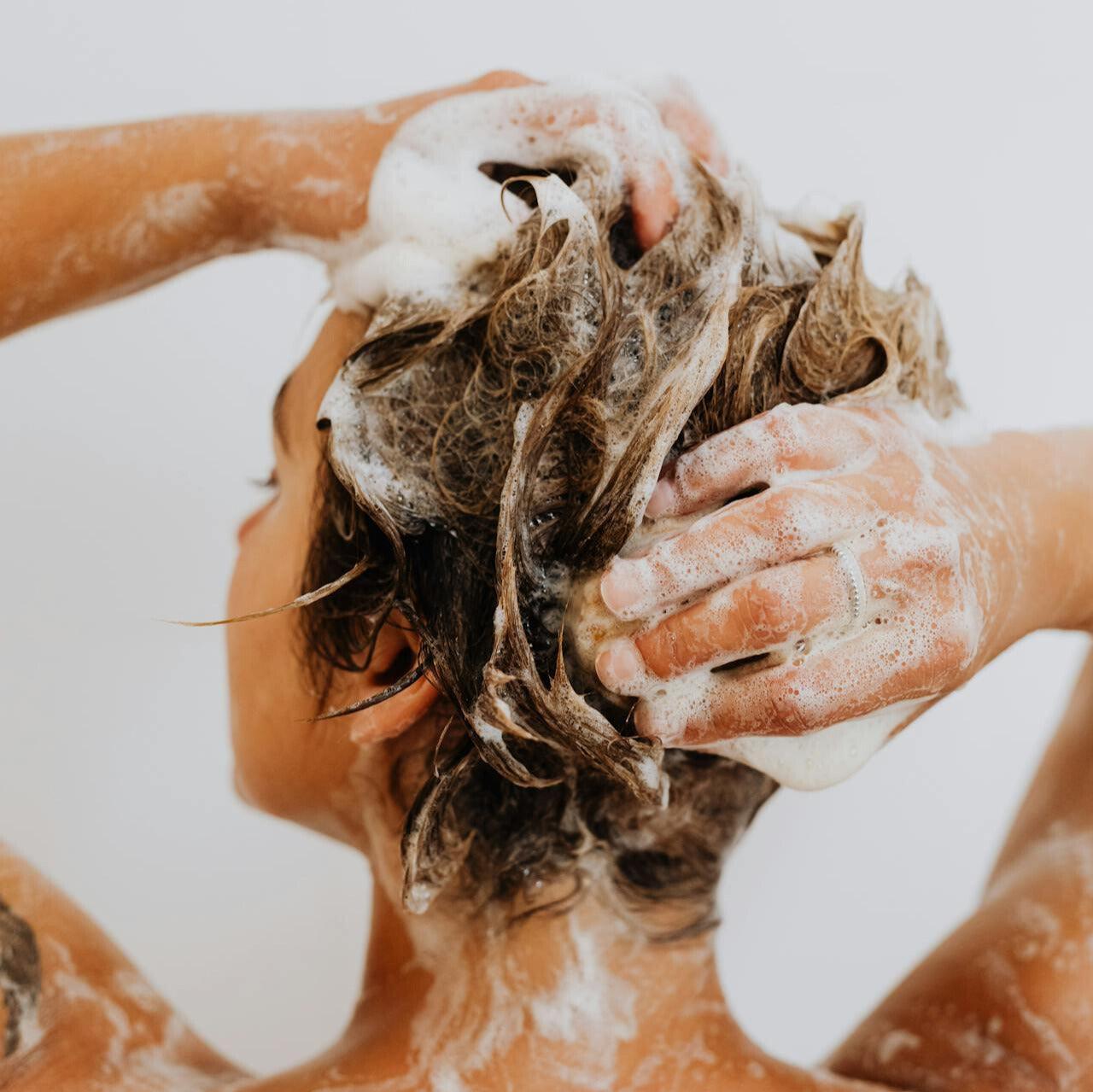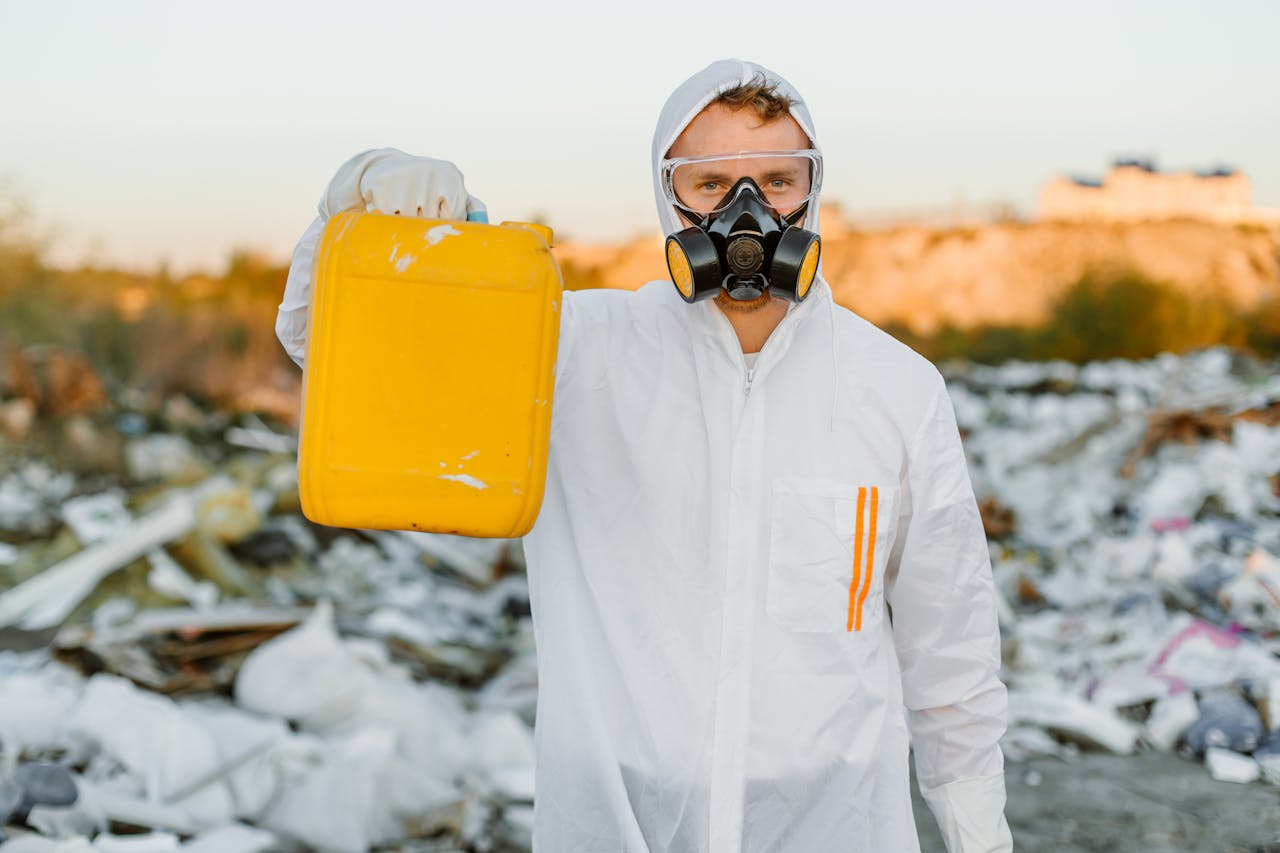

INGREDIENTS TO AVOID
What goes on goes in
At OM Botanical, we understand that the products you put on your skin are absorbed into your body. We’ve researched and tested hundreds of ingredients to formulate products that are both effective and safe. You can find a list of ingredients we’ve chosen to use in our products here.
Below is a list of ingredients we’ve rejected due to their toxic nature. We recommend you avoid them, too! It’s by no means an exhaustive list, but it’s a good starting point. By understanding these ingredients and how they appear on labels, you can make more informed choices about what goes on, and in, your body.
On the label: Aluminum Chloride, Aluminum Zirconium, Aluminum Chlorohydrate
About the Ingredient: Aluminum compounds, commonly found in antiperspirants, are known to block sweat glands and reduce perspiration. However, these compounds can mimic estrogen in the body, potentially disrupting hormone function. This hormone mimicry has raised concerns about their role in the development of hormone-related cancers, such as breast cancer. Given these risks, it's best to avoid products containing aluminum compounds and choose natural alternatives that keep you fresh while protecting your health.
You can find it in: Deodorants, antiperspirants
On the label: FD&C Red No. 40, Yellow No. 5, Blue No. 1, or CI numbers
Why you should avoid it: Artificial colors, often derived from petroleum or coal tar, are added to skincare products to make them visually appealing—but at what cost to your skin? Many artificial colors are linked to allergies, skin sensitivity, and even carcinogenic effects, raising concerns about their safety. These synthetic additives can irritate the skin, especially for those with sensitive or reactive skin types, and offer no real benefit to your skin’s health. By choosing products without artificial colors, you’re prioritizing a cleaner, safer skincare routine that focuses on nourishing your skin rather than exposing it to unnecessary and potentially harmful ingredients.
You can find it in: Lipsticks, blushes, bath bombs
On the label: Benzophenone, BP-1, BP-3
Why you should avoid it: Benzophenone is commonly used in skincare products as a UV blocker, but it has been linked to hormone disruption, as it can interfere with the endocrine system. Additionally, this chemical has potential carcinogenic effects, raising concerns about its long-term impact on health. To protect both your skin and overall well-being, it’s best to avoid benzophenone and opt for safer, natural alternatives for sun protection.
You can find it in: Lip balms, nail polish, sunscreens
On the label: BHA, BHT
Why you should avoid it: BHA and BHT are synthetic preservatives commonly used in skincare and cosmetic products to extend shelf life. However, these chemicals have been linked to potential health risks, including endocrine disruption, organ toxicity, and an increased risk of cancer. Long-term exposure to BHA and BHT can interfere with hormone function, which can affect overall health. Given these concerns, it's advisable to steer clear of products containing BHA and BHT, opting for natural preservatives that are safer for both your skin and your body.
You can find it in: Lipsticks, moisturizers, also in processed foods
On the label: p-Phenylenediamine, CI numbers (e.g., CI 77266 for black dyes)
Why you should avoid it: Coal tar dyes are synthetic colorants derived from petroleum and are classified as potential carcinogens. These dyes can cause skin irritation, allergic reactions, and other adverse effects, especially for individuals with sensitive skin. Long-term exposure to coal tar dyes may also contribute to health concerns, making them a risky ingredient in skincare products. Given their potential for harm, it's best to avoid products that contain coal tar dyes, choosing more natural and skin-friendly alternatives instead.
You can find it in: Hair dyes, eyeliners, mascaras
On the label: DMDM Hydantoin, Quaternium-15, Imidazolidinyl Urea, Diazolidinyl Urea, Bronopol, Sodium Hydroxymethylglycinate, 2-Bromo-2-Nitropropane-1,3-Diol
Why you should avoid it: Formaldehyde, a recognized carcinogen, poses serious health risks, including skin irritation, allergies, and respiratory issues. In skincare, formaldehyde-releasing agents are often used as preservatives, gradually emitting small amounts of formaldehyde over time. While this helps extend product shelf life, it also exposes your skin to a harmful substance linked to long-term health concerns. Choosing products free from formaldehyde and its derivatives ensures a safer, gentler skincare experience without compromising your health.
You can find it in: Nail polish, hair smoothing treatments, shampoos
On the label: Hydroquinone
Why you should avoid it: Hydroquinone is a potent skin-lightening agent often used to reduce dark spots and hyperpigmentation. However, long-term use or high concentrations can lead to a condition called ochronosis, where the skin becomes permanently discolored and darker. Additionally, hydroquinone has raised concerns due to its potential carcinogenic effects, especially with prolonged use. For safer and more natural alternatives, it's best to avoid hydroquinone in favor of ingredients that brighten skin without the risk of harmful side effects.
You can find it in: Skin lighteners, anti-pigmentation treatments
On the label: Dimehticone, Cyclomethicone, Siloxane, Amodimethicone
Why you should avoid it: Methicone and other silicones are often used in skincare and haircare products to create a smooth, glossy finish. However, these silicones form a barrier on the skin and scalp, which can trap dirt, bacteria, and oils, potentially leading to clogged pores, breakouts, or scalp irritation. Over time, they can build up on the skin and hair, preventing them from breathing naturally. Additionally, silicones are not biodegradable, contributing to environmental pollution when washed off into water systems. Opting for silicone-free products helps ensure cleaner skin and a more sustainable approach to beauty.
You can find it in: Primers, foundations, conditioners and other hair products
On the label: Microbeads, Polyethylene, Polypropylene, Polymethyl Methacrylate (PMMA)
Why you should avoid it: Microplastics, tiny plastic particles often found in exfoliants, scrubs, and other personal care products, pose significant environmental and health risks. When washed off, they pollute waterways and oceans, where they are ingested by marine life, causing harm to ecosystems and wildlife. These particles can accumulate in the food chain, posing a potential risk to human health as well. By choosing products free from microplastics, you help reduce environmental damage and protect our oceans, ensuring a safer, more sustainable future for all.
You can find it in: Exfoliators, toothpaste, body scrubs
On the label: Mineral Oil, Petrolatum, Paraffin Oil, Paraffinum Liquidum
Why you should avoid it: Mineral oil and petroleum-derived ingredients, commonly found in many skincare products, can clog pores and prevent the skin from breathing, leading to breakouts and other skin concerns. These ingredients can create a barrier that locks in moisture but also traps toxins and impurities, disrupting the skin’s natural detoxification process. Additionally, mineral oil can be contaminated with harmful polycyclic aromatic hydrocarbons (PAHs), known carcinogens that pose long-term health risks. Choosing products free from these ingredients ensures your skin can stay clean, healthy, and able to function naturally.
You can find it in: Lip balms, moisturizers, creams
On the label: Benzophenone-3 (Oxybenzone), Ethylhexyl Methoxycinnamate (Octinoxate)
Why you should avoid it: Oxybenzone and Octinoxate, commonly used in chemical sunscreens, are known to disrupt the endocrine system by interfering with hormone levels, which may have long-term effects on reproductive health. Additionally, these ingredients can accumulate in the body, potentially causing further harm over time. Beyond their impact on human health, oxybenzone and octinoxate are also harmful to the environment, particularly coral reefs. These chemicals contribute to coral bleaching and disrupt marine ecosystems, making them a poor choice for those concerned with both their health and the planet's well-being. Choosing reef-safe, mineral-based sunscreens is a better option for both you and the environment.
You can find it in: Sunscreens, SPF moisturizers
On the label: Methylparaben, Propylparaben, Butylparaben, Ethylparaben, Isobutylparaben, Isopropylparaben
Why you should avoid it: Parabens, widely used as preservatives to prevent mold and bacteria in cosmetic products, have raised red flags due to their potential impact on the endocrine system. These synthetic chemicals can mimic estrogen in the body, which may lead to hormonal imbalances, fertility challenges, and an increased risk of hormone-related cancers such as breast cancer. While parabens are effective at extending product shelf life, their possible long-term health effects make them a controversial choice. By choosing paraben-free skincare, you can reduce exposure to these suspected disruptors and support your overall hormonal health.
You can find it in: Moisturizers, foundations, shampoos, deodorants
On the label: Phenoxyethanol
Why you should avoid it: Phenoxyethanol is commonly used as a preservative in skincare products to prevent bacterial growth. However, it can cause irritation to the skin and eyes, especially for individuals with sensitive skin. At higher concentrations, phenoxyethanol may also be toxic and could lead to more serious health issues, including potential harm to the nervous system. For these reasons, it's best to avoid products containing phenoxyethanol, particularly if you have sensitive skin or are looking for gentler, safer alternatives in your skincare routine.
You can find it in: Lotions, serums, baby products
On the label: Diethyl Phthalate (DEP), Dibutyl Phthalate (DBP), Dimethyl Phthalate (DMP), Fragrance (phthalates are often hidden under "fragrance")
Why you should avoid it: Phthalates are chemicals commonly used to enhance product flexibility and stabilize synthetic fragrances, but their potential risks make them a serious concern. As known endocrine disruptors, phthalates can interfere with hormone regulation, leading to reproductive harm, developmental issues in children, and even an increased risk of cancer. Their ability to accumulate in the body over time amplifies these risks. Opting for phthalate-free skincare not only supports safer, cleaner beauty routines but also protects your long-term health and well-being.
You can find it in: Perfumes, nail polish, hair sprays
On the label: PEG- followed by a number (e.g., PEG-100, PEG-20), Propylene Glycol
Why you should avoid it: Polyethylene Glycols (PEGs) are petroleum-derived compounds commonly used as thickeners, solvents, and softeners in skincare products. Unfortunately, PEGs can be contaminated with harmful substances like ethylene oxide and 1,4-dioxane, both of which are recognized carcinogens. Moreover, PEGs may disrupt the skin's natural barrier, enhancing the absorption of potentially harmful chemicals into the body. To prioritize safety and skin health, choose products free from PEGs and other synthetic additives.
You can find it in: Creams, serums, cleansers
On the label: Propylene Glycol
Why you should avoid it: Propylene glycol is commonly used as a humectant in skincare products to retain moisture. While it's generally considered safe for most people, it can cause irritation in individuals with sensitive skin, leading to redness, itching, or rashes. Additionally, propylene glycol can enhance the absorption of other potentially harmful chemicals into the skin, increasing the risk of exposure to unwanted toxins. For those with delicate skin or those looking to minimize their exposure to harmful substances, it's best to avoid products containing this ingredient.
You can find it in: Lotions, deodorants, and shampoos
On the label: Retinyl Palmitate, Retinol, Retin A, Tretinoin, Retinoic Acid
Why you should avoid it: Retinol, a potent vitamin A derivative, can be harsh on the skin, particularly when exposed to sunlight. It may accelerate skin damage, increase the risk of sunburn, and potentially heighten the chances of developing skin cancer due to its sensitivity to UV rays. Additionally, retinol is not recommended during pregnancy or breastfeeding as it may pose risks to fetal development. While retinol is often used to reduce the appearance of fine lines and wrinkles, its potential side effects make it a less ideal choice for those seeking safer, more gentle alternatives in their skincare routines.
You can find it in: Anti-aging products, acne products, sunscreens
On the label: Cyclotetrasiloxane, Cyclopentasiloxane, Cyclohexasiloxane
Why you should avoid it: Siloxanes, silicone-based compounds commonly used in cosmetics and skincare products for their smooth texture and water-repellent properties, can disrupt hormone function. These compounds have been linked to potential endocrine interference, which could affect reproductive health. Additionally, siloxanes are highly persistent in the environment, posing risks to aquatic ecosystems and wildlife. To protect both your health and the planet, it's best to avoid products containing siloxanes and opt for natural, eco-friendly alternatives.
You can find it in: Primers, hair products, moisturizers
On the label: Sodium Lauryl Sulfate, Sodium Laureth Sulfate, Ammonium Lauryl Sulfate
Why you should avoid it: SLS and SLES are common surfactants used for their foaming and cleansing abilities, but they can be harsh on the skin. These ingredients often strip away natural oils, leading to irritation, dryness, and disruption of the skin's moisture barrier. Additionally, SLES may be contaminated with 1,4-dioxane, a byproduct linked to potential carcinogenic effects. For a healthier, gentler skincare routine, opt for sulfate-free alternatives that cleanse effectively without compromising your skin's natural balance.
You can find it in: Shampoos, toothpaste, body washes
On the label: Fragrance, Parfum, Aroma
Why you should avoid it: Synthetic fragrances often contain a cocktail of undisclosed chemicals, including phthalates, which are known endocrine disruptors. These artificial scents can trigger allergies, respiratory issues, and skin irritation, especially in those with sensitive skin. Additionally, the hidden chemicals in synthetic fragrances may disrupt hormones, contributing to long-term health concerns. For a safer and more transparent approach, choose skincare products scented with natural, plant-based essential oils.
You can find it in: Perfumes, lotions, shampoos
On the label: PABA
Why you should avoid it: Synthetic UV filters like PABA (Para-Aminobenzoic Acid) are commonly used in sunscreens but are associated with skin irritation and allergic reactions. These ingredients may also disrupt the endocrine system, potentially affecting hormone balance. To safeguard your skin and health, it’s better to choose mineral-based sun protection that provides safer, more effective coverage without these risks.
You can find it in: Sunscreens and moisturizers
On the label: Talc
Why you should avoid it: Talc, a mineral commonly used in skincare products, may be contaminated with asbestos, a known carcinogen linked to lung cancer and other respiratory diseases. The inhalation of talc particles, especially in powder form, poses significant health risks. Even trace amounts of asbestos in talc can be harmful, making it especially dangerous for babies and individuals with respiratory sensitivities. Due to its potential to cause serious health issues, it's best to avoid products containing talc, particularly those that may not be free from asbestos contamination.
You can find it in: Powders, eyeshadows, blush
On the label: Toluene, Benzene, Methylbenzene, Phenylmethane
Why you should avoid it: Toluene is a solvent commonly found in nail polishes and other cosmetic products. It can have harmful effects on the respiratory system when inhaled and may cause dizziness, headaches, or nausea. Additionally, toluene is known to pose developmental risks to unborn children, potentially affecting fetal growth and development. To prioritize your health and the well-being of your baby, it's important to avoid products containing toluene, especially during pregnancy.
You can find it in: Nail polish, hair dyes
On the label: Triclosan, Triclocarban
Why you should avoid it: Triclosan and Triclocarban, commonly used antibacterial agents, pose significant risks to both health and the environment. These chemicals are known endocrine disruptors, potentially interfering with hormone balance and contributing to long-term health issues like fertility problems and developmental concerns. They are also associated with the rise of antibiotic-resistant bacteria, making infections harder to treat. Additionally, Triclosan and Triclocarban can cause liver toxicity and are harmful to aquatic ecosystems, as they persist in water supplies and disrupt marine life. Opting for products without these ingredients supports healthier skin and a safer environment.
You can find it in: Toothpaste, antibacterial soaps, deodorants
Always opt for transparent brands that disclose their full list of ingredients and prioritize safety - you can check ingredients and product labels on third party sources like the Yuka barcode scanning app (free download) and the Environmental Working Group (EWG).
